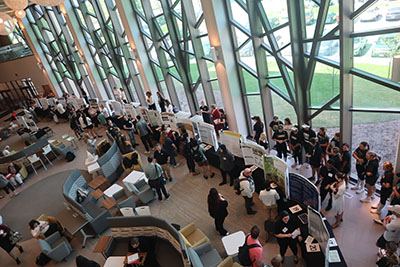The Influence of High Renaissance Art on the Mannerist Movement: Examining the Works of Rosso Fiorentino, Pontormo, and Bronzino
Student Type
Graduate
College Affiliation
College of Arts and Humanities
Department
Art History and Visual Culture
Submission Type
Oral Presentation
Abstract
This paper explores the impact of the High Renaissance, led by Leonardo da Vinci, Michelangelo, and Raphael, on the development of the Mannerist movement. Specifically, it examines the ways in which three prominent Mannerist artists, Pontormo, Rosso Fiorentino, and Bronzino, built upon the "ideal" art produced during the High Renaissance.
Through a comparative analysis of works by the "three greats" of the High Renaissance and those of the three Mannerist artists, this paper identifies similarities and differences in style, composition, and subject matter. It also considers broader cultural influences that contributed to the development of Mannerism.
The paper argues that the rules that Leonardo and Michelangelo broke, and the contributions they, along with Raphael, made to the rising status of the artist, paved the way for the innovations of the Mannerist phase. Ultimately, this paper demonstrates the ways in which the High Renaissance substantially changed art and made the Mannerist movement possible.
Recommended Citation
Hallford, Jana and Hutson, James, "The Influence of High Renaissance Art on the Mannerist Movement: Examining the Works of Rosso Fiorentino, Pontormo, and Bronzino" (2023). 2023 Student Academic Showcase. 1.
https://digitalcommons.lindenwood.edu/src_2023/Oral_Presentations/Session1/1
The Influence of High Renaissance Art on the Mannerist Movement: Examining the Works of Rosso Fiorentino, Pontormo, and Bronzino
This paper explores the impact of the High Renaissance, led by Leonardo da Vinci, Michelangelo, and Raphael, on the development of the Mannerist movement. Specifically, it examines the ways in which three prominent Mannerist artists, Pontormo, Rosso Fiorentino, and Bronzino, built upon the "ideal" art produced during the High Renaissance.
Through a comparative analysis of works by the "three greats" of the High Renaissance and those of the three Mannerist artists, this paper identifies similarities and differences in style, composition, and subject matter. It also considers broader cultural influences that contributed to the development of Mannerism.
The paper argues that the rules that Leonardo and Michelangelo broke, and the contributions they, along with Raphael, made to the rising status of the artist, paved the way for the innovations of the Mannerist phase. Ultimately, this paper demonstrates the ways in which the High Renaissance substantially changed art and made the Mannerist movement possible.


